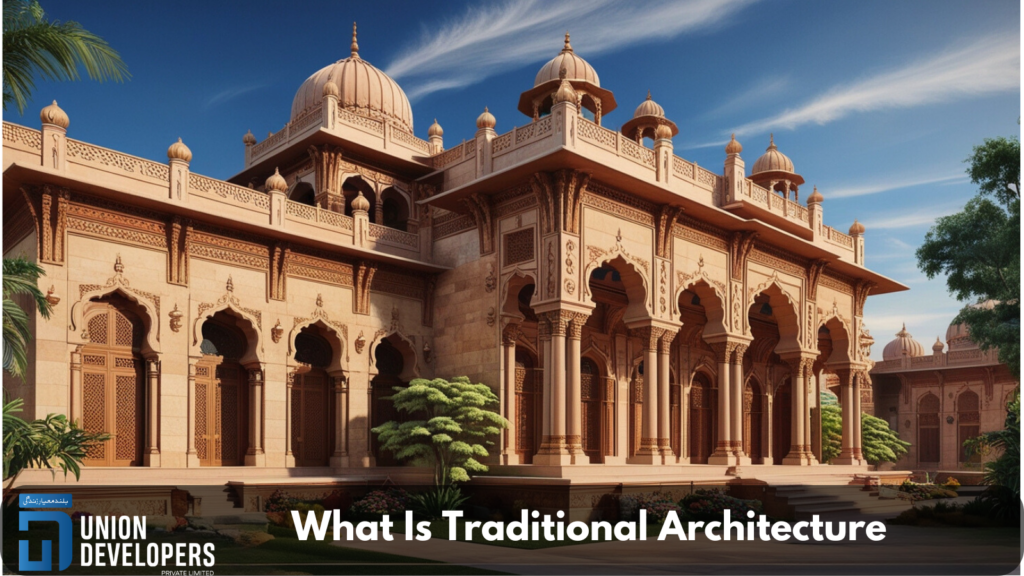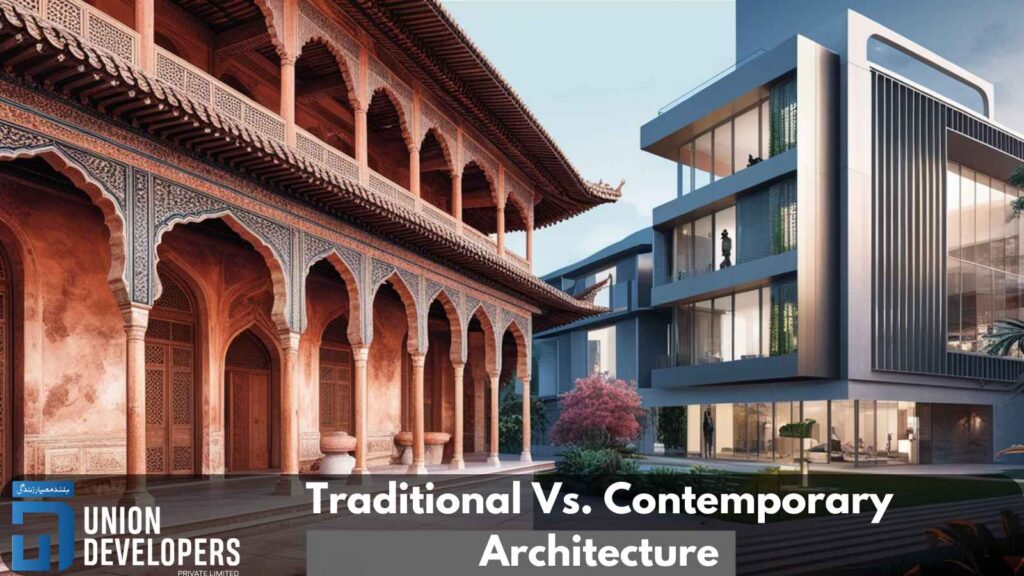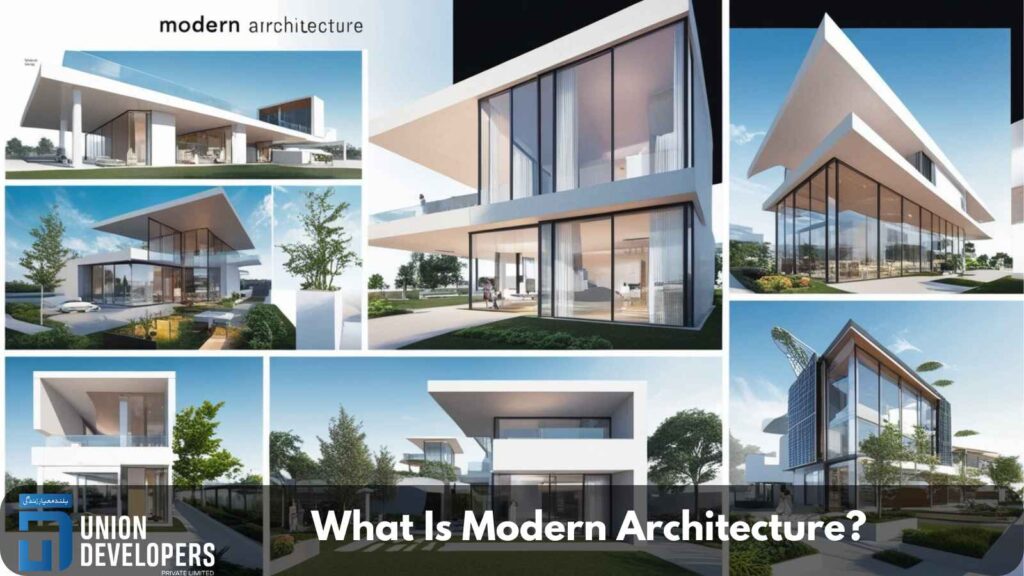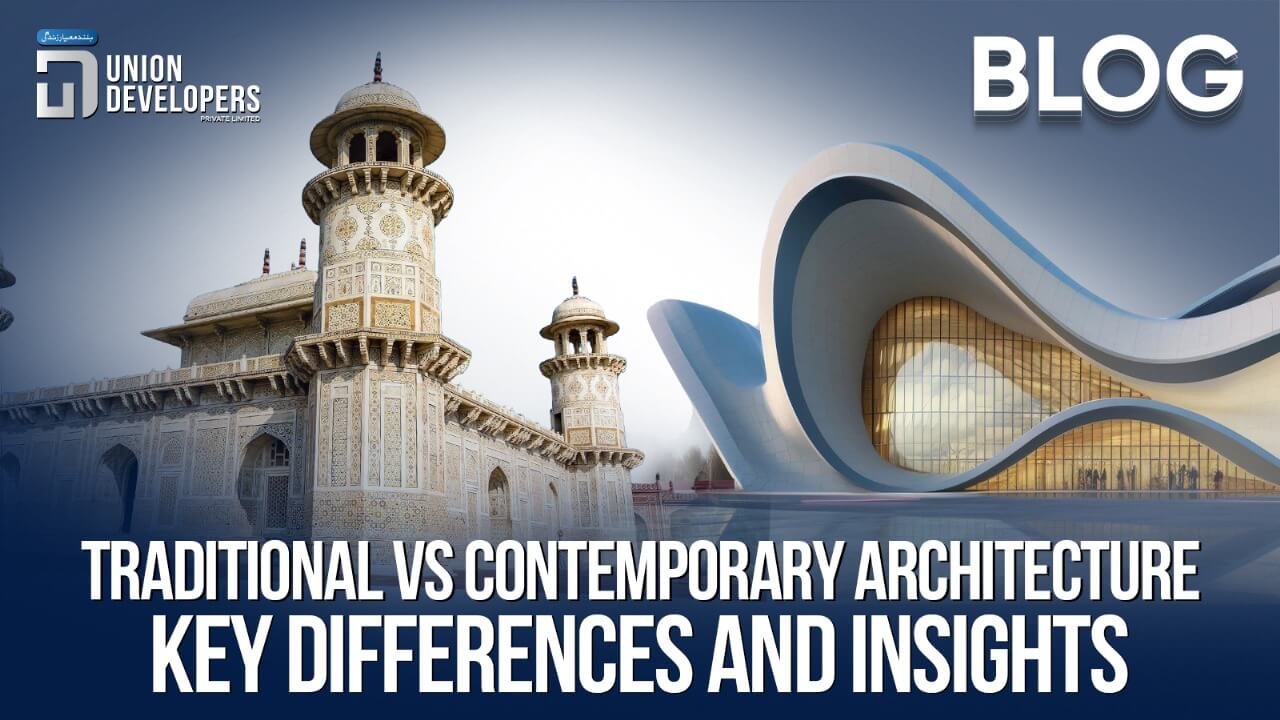Many people find the phrase contemporary and traditional architectural styles confusing. Some mix modern with polished and new homes, while others confuse traditional homes with neglected and ancient ones. In reality, traditional design elements can be used in new homes, and contemporary architecture can use advanced technologies. In this write-up, we will distinguish between traditional and contemporary architecture.
What Is Traditional Architecture?

Traditional architecture is a historic type of house structure, including many cultural elements to give it a unique feel. This type of architecture is inspired by customs and can be used even now.
Craftsman, colonial, Victorian, and neoclassical are some examples of traditional or historical styles of architecture. Moreover, the building materials and origins are different, but the house interior designs are comparable. Traditional architecture has been used to preserve the essence of past designs. This is still relevant today, and many architects use it to give the house a nostalgic and aesthetic look.
Mostly, architects use some of its features to fulfil the demands of the clients. Furthermore, these are known for elegant, simple, and welcoming home designs.
What Is Contemporary Architecture?

Contemporary architecture is known as the current style of architecture for homes and buildings. Buildings from the late 20th century to the present moment. These include elements such as non-linear forms, sustainable building practices, and innovative materials.
Major contemporary 21st-century architects include Jean Nouvel, Frank Gehry, Tadao Ando, Santiago Calatrava, Jean Nouvel, and the late Zaha Hadid. Additionally, their work is known for unconventional and sometimes gravity-defying shapes of buildings. It is space-saving, functional, cost-efficient, and comfortable.
Moreover, contemporary architectural characteristics include asymmetry, rounded forms, curved lines, free-form shapes, open floor plans, green roofs, sustainable building practices, minimalist interior designs, and more.
Traditional Vs. Contemporary Architecture

Let’s compare both traditional and contemporary architecture to understand the main differences between the two:
Floor Plan
In traditional designs, the houses are larger and more spacious. This is seen in grand homes, villas, and hotels. The main focus of segmented rooms is to create privacy for individuals.
On the other hand, contemporary designs focus on open-concept layouts, where spaces have a flow. Also, it mostly emphasises functionality and adaptability by using the maximum space.
Materials
It uses local and natural materials like stone, wood, brick, etc. While these home materials are less expensive, they are now considered luxurious and expensive because of their rare use.
In contrast, contemporary materials use modern and innovative materials like steel, glass, concrete, and composites. These are considered more sustainable, cost-effective, and versatile. Contemporary materials also use minimalism and sleek finishes. For instance, blinds over heavy curtains are in the style of contemporary designs.
Windows and Lighting
In traditional designs, smaller windows are preferred with hand-carved wooden frames or stained glass windows. This design covers aesthetics over functionality and uses artificial lighting.
Also, contemporary architecture uses expensive and large windows incorporating natural light. These designs use function more often while maintaining modern aesthetics.
Furniture
The furniture in traditional designs includes classic and ornate, which is expensive and handcrafted, maintaining elegance. Contemporary architecture focuses on durable and sleek furniture. The contemporary designs are simple yet modern and available in many varieties.
Kitchen Design
The kitchen in traditional architecture features large drawers and cabinets. It focuses on classic style with wood finishes. The traditional designs often focus on aesthetic sense rather than modern convenience.
In contemporary architecture, kitchen designs are more functional and efficient. Additionally, smart appliances and organised kitchenettes make it modern and safer.
Key Takeaway: While traditional architecture represents elegance with cultural significance, contemporary architecture flaunts current lifestyles with modernity and functionality. Also, your choice will decide which design type is more feasible and useful for you.
Interesting Facts About Contemporary Architecture

One of the most challenging things about defining contemporary architecture is the fact that it is often called ‘modern.’ A new build can be modern without having the elements of contemporary architecture.
Sometimes, a new building can have contemporary, modern architecture. A building can be a mere copy of some oil period design. In the celebration of the UK renaissance of contemporary architecture, 10 public buildings were featured in a stamp collection. The stamps featured photos by Hufton + Crow, an architectural photographer. The buildings included the London Aquatics Centre, the Tate Modern in London, and Edinburgh’s Scottish Parliament.
What Is Modern Architecture?
Modern homes are based on minimalist design that also focuses on functionalism. However, modern architecture is based on rectangular forms and lacks whitewashed exteriors and adornment.

Modern architecture is closely related to contemporary designs but slightly different. Modern uses natural materials like wood, but contemporary uses mixed materials. The major difference is that contemporary architecture designs focus on smart-home technology and recycled materials as well. Moreover, they focus on sustainability while maintaining the modern touch.
Difference Between Traditional, Modern And Contemporary Architecture
| Aspect | Modern | Contemporary | Traditional |
| Timeframe | 1920s–1970s | Present Day | Pre-20th Century |
| Design Style | Minimalist | Fluid/ Dynamic | Decorative/Ornate |
| Materials | Glass and Concrete | Eco-Friendly | Stone and Wood |
| Windows | Functional | Expansive | Small and Detailed |
| Aesthetic | Simple and Clean | Innovative and Bold | Timeless and Classic |
| Technology Use | Basic Integration | Smart Systems | None |
The Verdict
Compared to traditional architecture, modern structures use building materials that are produced faster and are affordable. Contemporary designs use more spaces for smart integration and a more functional touch. It excuses the relaxed and casual settings in the architecture. Traditional structures are more durable and use far more expensive materials, such as stone and terracotta. So, these are resilient to external environmental damage and last longer.
There are many creative ways for the types to coexist in a single design. Expert architects can integrate more than one type of architecture into one house or a building. It depends on the client’s demands; they want specific features in their houses. Union developers provide the best architecture services in Pakistan. If you want your house to be perfectly built and constructed, partner with Union Developers.





